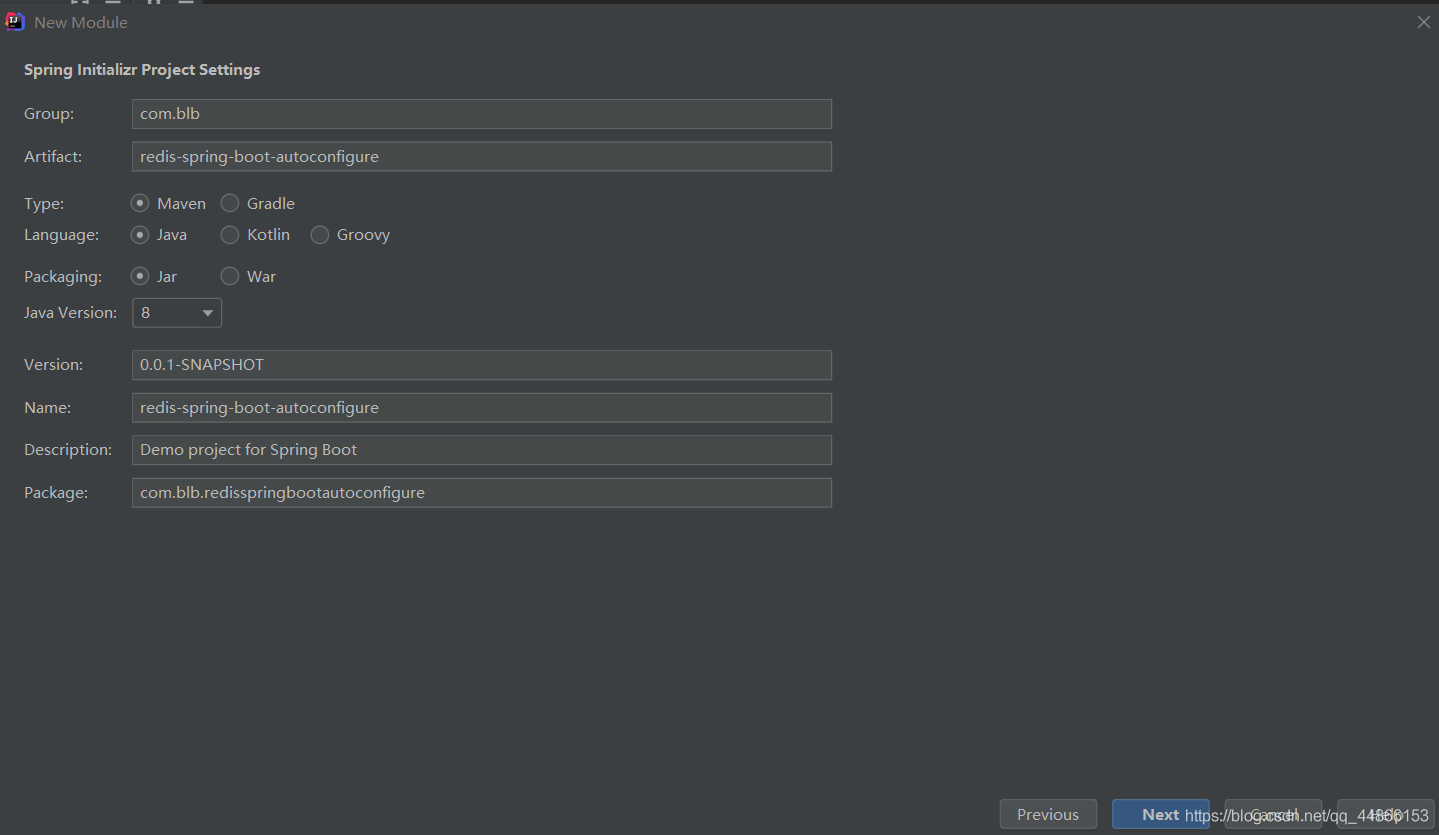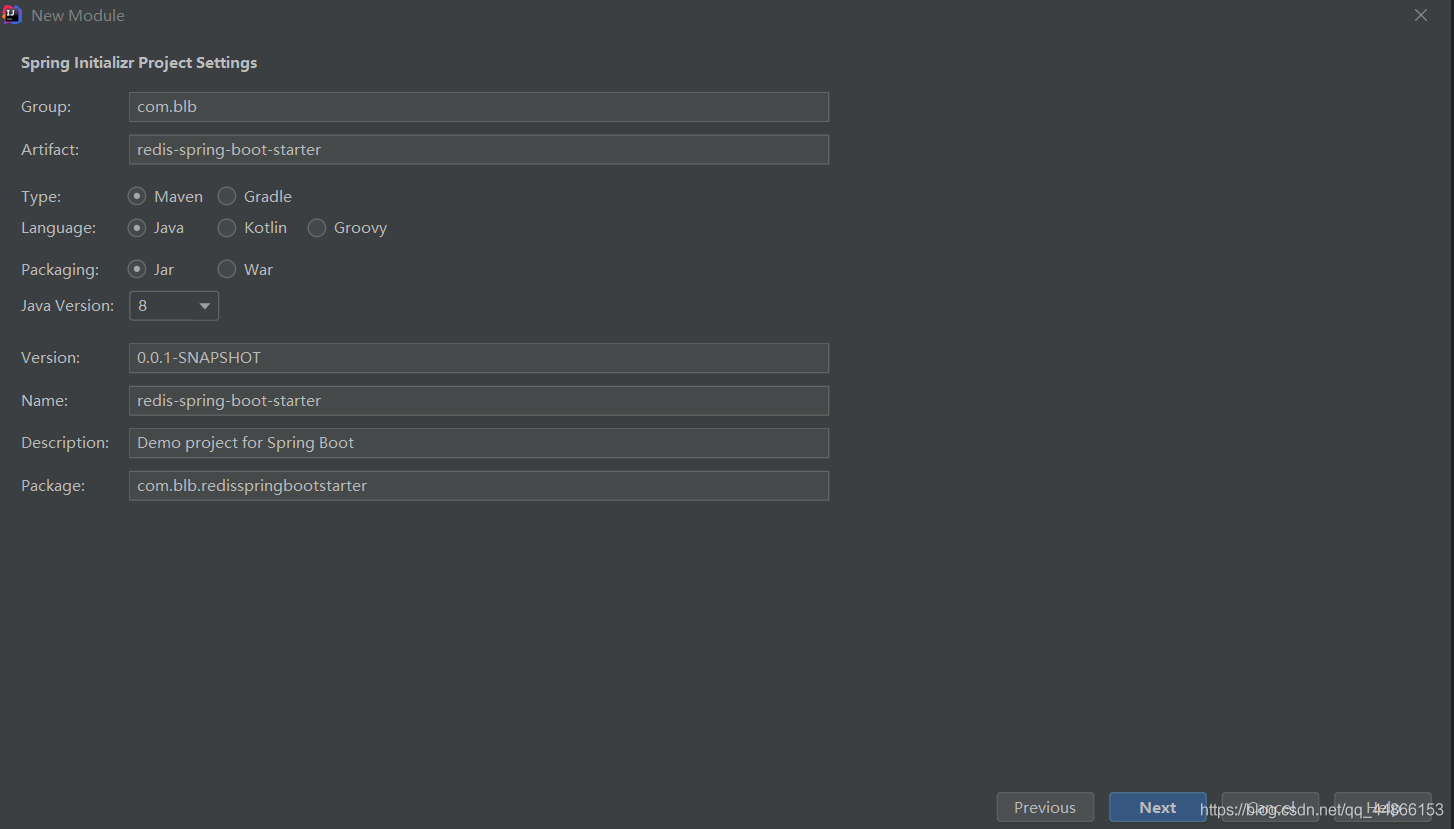浅谈springboot自动装配原理
一、SpringBootApplication
@Target(ElementType.TYPE)
@Retention(RetentionPolicy.RUNTIME)
@Documented
@Inherited
@SpringBootConfiguration
@EnableAutoConfiguration
@ComponentScan(excludeFilters = { @Filter(type = FilterType.CUSTOM, classes = TypeExcludeFilter.class),
@Filter(type = FilterType.CUSTOM, classes = AutoConfigurationExcludeFilter.class) })
public @interface SpringBootApplication {
@Target(ElementType.TYPE)
设置当前注解可以标记在哪里,而SpringBootApplication只能用在类上面
还有一些其他的设置
public enum ElementType {
/** Class, interface (including annotation type), or enum declaration */
TYPE,
/** Field declaration (includes enum constants) */
FIELD,
/** Method declaration */
METHOD,
/** Formal parameter declaration */
PARAMETER,
/** Constructor declaration */
CONSTRUCTOR,
/** Local variable declaration */
LOCAL_VARIABLE,
/** Annotation type declaration */
ANNOTATION_TYPE,
/** Package declaration */
PACKAGE,
/**
* Type parameter declaration
*
* @since 1.8
*/
TYPE_PARAMETER,
/**
* Use of a type
*
* @since 1.8
*/
TYPE_USE,
/**
* Module declaration.
*
* @since 9
*/
MODULE
}
@Retention(RetentionPolicy.RUNTIME)
public enum RetentionPolicy {
/**
* Annotations are to be discarded by the compiler.
*/
SOURCE,
/**
* Annotations are to be recorded in the class file by the compiler
* but need not be retained by the VM at run time. This is the default
* behavior.
*/
CLASS,
/**
* Annotations are to be recorded in the class file by the compiler and
* retained by the VM at run time, so they may be read reflectively.
*
* @see java.lang.reflect.AnnotatedElement
*/
RUNTIME
}
SOURCE 当编译时,注解将不会出现在class源文件中
CLASS 注解将会保留在class源文件中,但是不会被jvm加载,也就意味着不能通过反射去找到该注解,因为没有加载到java虚拟机中
RUNTIME是既会保留在源文件中,也会被虚拟机加载
@Documented
java doc 会生成注解信息
@Inherited
是否会被继承,就是如果一个子类继承了使用了该注解的类,那么子类也能继承该注解
@SpringBootConfiguration
标注在某个类上,表示这是一个Spring Boot的配置类,本质上也是使用了@Configuration注解
@Target({ElementType.TYPE})
@Retention(RetentionPolicy.RUNTIME)
@Documented
@Configuration
public @interface SpringBootConfiguration {
@EnableAutoConfiguration
@EnableAutoConfiguration告诉SpringBoot开启自动配置,会帮我们自动去加载 自动配置类
@Target({ElementType.TYPE})
@Retention(RetentionPolicy.RUNTIME)
@Documented
@Inherited
@AutoConfigurationPackage
@Import({AutoConfigurationImportSelector.class})
public @interface EnableAutoConfiguration {
@AutoConfigurationPackage
将当前配置类所在包保存在BasePackages的Bean中。供Spring内部使用
@Import({AutoConfigurationImportSelector.class})来加载配置类
配置文件的位置:META-INF/spring.factories,该配置文件中定义了大量的配置类,当springboot启动时,会自动加载这些配置类,初始化Bean
并不是所有Bean都会被初始化,在配置类中使用Condition来加载满足条件的Bean
二、案例
自定义redis-starter,要求当导入redis坐标时,spirngboot自动创建jedis的Bean
步骤
1.创建redis-spring-boot-autoconfigure模块
2.创建redis-spring-boot-starter模块,依赖redis-spring-boot-autoconfigure的模块
3.在redis-spring-boot-autoconfigure模块中初始化jedis的bean,并定义META-INF/spring.factories文件
4.在测试模块中引入自定义的redis-starter依赖,测试获取jedis的bean,操作redis
1.首先新建两个模块


删除一些没有用的东西,和启动类否则会报错
2.redis-spring-boot-starter模块的pom.xml里面引入redis-spring-boot-autoconfigure的模块的坐标
3.RedisAutoConfiguration配置类
package com.blb;
import org.springframework.boot.context.properties.EnableConfigurationProperties;
import org.springframework.context.annotation.Bean;
import org.springframework.context.annotation.Configuration;
import redis.clients.jedis.Jedis;
@Configuration
@EnableConfigurationProperties(RedisProperties.class)
public class RedisAutoConfiguration {
// 提供Jedis的bean
@Bean
public Jedis jedis(RedisProperties redisProperties){
return new Jedis(redisProperties.getHost(),redisProperties.getPort());
}
}
RedisProperties
package com.blb;
import org.springframework.boot.context.properties.ConfigurationProperties;
@ConfigurationProperties(prefix = "redis")
public class RedisProperties {
private String host="localhost";
private int port=6379;
public String getHost() {
return host;
}
public void setHost(String host) {
this.host = host;
}
public int getPort() {
return port;
}
public void setPort(int port) {
this.port = port;
}
}
@ComponentScan
扫描包 相当于在spring.xml 配置中context:comonent-scan 但是并没有指定basepackage,如果没有指定spring底层会自动扫描当前配置类所有在的包
排除的类型
public enum FilterType {
/**
* Filter candidates marked with a given annotation.
* @see org.springframework.core.type.filter.AnnotationTypeFilter
*/
ANNOTATION,
/**
* Filter candidates assignable to a given type.
* @see org.springframework.core.type.filter.AssignableTypeFilter
*/
ASSIGNABLE_TYPE,
/**
* Filter candidates matching a given AspectJ type pattern expression.
* @see org.springframework.core.type.filter.AspectJTypeFilter
*/
ASPECTJ,
/**
* Filter candidates matching a given regex pattern.
* @see org.springframework.core.type.filter.RegexPatternTypeFilter
*/
REGEX,
/** Filter candidates using a given custom
* {@link org.springframework.core.type.filter.TypeFilter} implementation.
*/
CUSTOM
}
ANNOTATION 默认根据注解的完整限定名设置排除
ASSIGNABLE_TYPE 根据类的完整限定名排除
ASPECTJ 根据切面表达式设置排除
REGEX 根据正则表达式设置排除
CUSTOM 自定义设置排除
@ComponentScan(excludeFilters = { @Filter(type = FilterType.CUSTOM, classes = TypeExcludeFilter.class),
@Filter(type = FilterType.CUSTOM, classes = AutoConfigurationExcludeFilter.class) })
按照自定义的方式来排除需要指定一个类,要实现TypeFilter接口,重写match方法
public class TypeExcludeFilter implements TypeFilter, BeanFactoryAware {
public boolean match(MetadataReader metadataReader, MetadataReaderFactory metadataReaderFactory) throws IOException {
if (this.beanFactory instanceof ListableBeanFactory && this.getClass() == TypeExcludeFilter.class) {
Iterator var3 = this.getDelegates().iterator();
while(var3.hasNext()) {
TypeExcludeFilter delegate = (TypeExcludeFilter)var3.next();
if (delegate.match(metadataReader, metadataReaderFactory)) {
return true;
}
}
}
return false;
}
}
TypeExcludeFilter :springboot对外提供的扩展类, 可以供我们去按照我们的方式进行排除
AutoConfigurationExcludeFilter :排除所有配置类并且是自动配置类中里面的其中一个
示例
package com.blb.springbootyuanli.config;
import org.springframework.boot.context.TypeExcludeFilter;
import org.springframework.core.type.classreading.MetadataReader;
import org.springframework.core.type.classreading.MetadataReaderFactory;
import java.io.IOException;
public class MyTypeExcludeFilter extends TypeExcludeFilter {
@Override
public boolean match(MetadataReader metadataReader, MetadataReaderFactory metadataReaderFactory) throws IOException {
if(metadataReader.getClassMetadata().getClass()==UserConfig.class){
return true;
}
return false;
}
}
三、Condition
@Conditional是Spring4新提供的注解,它的作用是按照一定的条件进行判断,满足条件给容器注册bean,实现选择性的创建bean的操作,该注解为条件装配注解
源码
@Target({ElementType.TYPE, ElementType.METHOD})
@Retention(RetentionPolicy.RUNTIME)
@Documented
public @interface Conditional {
/**
* All {@link Condition} classes that must {@linkplain Condition#matches match}
* in order for the component to be registered.
*/
Class<? extends Condition>[] value();
}
@FunctionalInterface
public interface Condition {
/**
* Determine if the condition matches.
* @param context the condition context
* @param metadata the metadata of the {@link org.springframework.core.type.AnnotationMetadata class}
* or {@link org.springframework.core.type.MethodMetadata method} being checked
* @return {@code true} if the condition matches and the component can be registered,
* or {@code false} to veto the annotated component's registration
*/
boolean matches(ConditionContext context, AnnotatedTypeMetadata metadata);
}
重写matches方法如果返回true spring则会帮你创建该对象,否则则不会
springboot提供的常用条件注解
@ConditionalOnProperty:判断文件中是否有对应属性和值才实例化Bean @ConditionalOnClass 检查类在加载器中是否存在对应的类,如果有则被注解修饰的类就有资格被 Spring 容器所注册,否则会被跳过。 @ConditionalOnBean 仅仅在当前上下文中存在某个对象时,才会实例化一个 Bean @ConditionalOnClass 某个 CLASS 位于类路径上,才会实例化一个 Bean @ConditionalOnExpression 当表达式为 true 的时候,才会实例化一个 Bean @ConditionalOnMissingBean 仅仅在当前上下文中不存在某个对象时,才会实例化一个 Bean @ConditionalOnMissingClass 某个 CLASS 类路径上不存在的时候,才会实例化一个 Bean
案例
在springIOC容器中有一个User的bean,现要求:
引入jedis坐标后,加载该bean,没导入则不加载
实体类
package com.blb.springbootyuanli.entity;
public class User {
private String name;
private int age;
get/set
UserConfig
配置类
package com.blb.springbootyuanli.config;
import com.blb.springbootyuanli.condition.UserCondition;
import com.blb.springbootyuanli.entity.User;
import org.springframework.context.annotation.Bean;
import org.springframework.context.annotation.Conditional;
import org.springframework.context.annotation.Configuration;
@Configuration
public class UserConfig {
@Bean
@Conditional(UserCondition.class)
public User user(){
return new User();
}
}
UserCondition
实现Condition接口,重写matches方法
package com.blb.springbootyuanli.condition;
import org.springframework.context.annotation.Condition;
import org.springframework.context.annotation.ConditionContext;
import org.springframework.core.type.AnnotatedTypeMetadata;
public class UserCondition implements Condition {
@Override
public boolean matches(ConditionContext context, AnnotatedTypeMetadata metadata) {
//思路判断jedis的class文件是否存在
boolean flag=true;
try {
Class<?> aClass = Class.forName("redis.clients.jedis.Jedis");
} catch (ClassNotFoundException e) {
flag=false;
}
return flag;
}
}
启动类
package com.blb.springbootyuanli;
import org.springframework.boot.SpringApplication;
import org.springframework.boot.autoconfigure.SpringBootApplication;
import org.springframework.context.ConfigurableApplicationContext;
@SpringBootApplication
public class SpringbootYuanliApplication {
public static void main(String[] args) {
ConfigurableApplicationContext app = SpringApplication.run(SpringbootYuanliApplication.class, args);
Object user = app.getBean("user");
System.out.println(user);
}
}
当我们在pom.xml引入jedis的坐标时,就可以打印user对象,当删除jedis的坐标时,运行就会报错 No bean named ‘user' available
四、案例升级
将类的判断定义为动态的,判断那个字节码文件可以动态指定
自定义一个注解
添加上元注解
package com.blb.springbootyuanli.condition;
import org.springframework.context.annotation.Conditional;
import java.lang.annotation.*;
@Target({ElementType.TYPE, ElementType.METHOD}) //该注解的添加范围
@Retention(RetentionPolicy.RUNTIME) //该注解的生效时机
@Documented //生成javadoc的文档
@Conditional(UserCondition.class)
public @interface UserClassCondition {
String[] value();
}
UserConfig
package com.blb.springbootyuanli.config;
import com.blb.springbootyuanli.condition.UserClassCondition;
import com.blb.springbootyuanli.entity.User;
import org.springframework.context.annotation.Bean;
import org.springframework.context.annotation.Configuration;
@Configuration
public class UserConfig {
@Bean
//@Conditional(UserCondition.class)
@UserClassCondition("redis.clients.jedis.Jedis")
public User user(){
return new User();
}
}
package com.blb.springbootyuanli.condition;
import org.springframework.context.annotation.Condition;
import org.springframework.context.annotation.ConditionContext;
import org.springframework.core.type.AnnotatedTypeMetadata;
import java.util.Map;
public class UserCondition implements Condition {
/**
*
* @param context 上下文对象,用于获取环境,ioc容器,classloader对象
* @param metadata 注解元对象。可以获取注解定义的属性值
* @return
*/
@Override
public boolean matches(ConditionContext context, AnnotatedTypeMetadata metadata) {
//思路判断指定属性的class文件是否存在
//获取注解属性值 value
Map<String,Object> map=metadata.getAnnotationAttributes(UserClassCondition.class.getName());
String[] values= (String[])map.get("value");
boolean flag=true;
try {
for(String classname:values){
Class<?> aClass = Class.forName(classname);
}
} catch (ClassNotFoundException e) {
flag=false;
}
return flag;
}
}
测试自带的注解
package com.blb.springbootyuanli.config;
import com.blb.springbootyuanli.entity.User;
import org.springframework.boot.autoconfigure.condition.ConditionalOnProperty;
import org.springframework.context.annotation.Bean;
import org.springframework.context.annotation.Configuration;
@Configuration
public class UserConfig {
@Bean
//@Conditional(UserCondition.class)
//@UserClassCondition("redis.clients.jedis.Jedis")
@ConditionalOnProperty(name="age",havingValue = "18")
//只有在配置文件中有age并且值为18spring在能注册该bean
public User user(){
return new User();
}
}
五、小结
自定义条件:
1.定义条件类:自定义类实现Condition接口,重写重写matches方法,在matches方法中进行逻辑判断,返回boolean值
2.matches方法的两个参数:
context:上下文对象,可以获取属性值,获取类加载器,获取BeanFactory
metadata:元数据对象,用于获取注解属性
3.判断条件:在初始化Bean时,使用@Conditional(条件类.class) 注解
到此这篇关于浅谈springboot自动装配原理的文章就介绍到这了,更多相关springboot自动装配内容请搜索我们以前的文章或继续浏览下面的相关文章希望大家以后多多支持我们!

